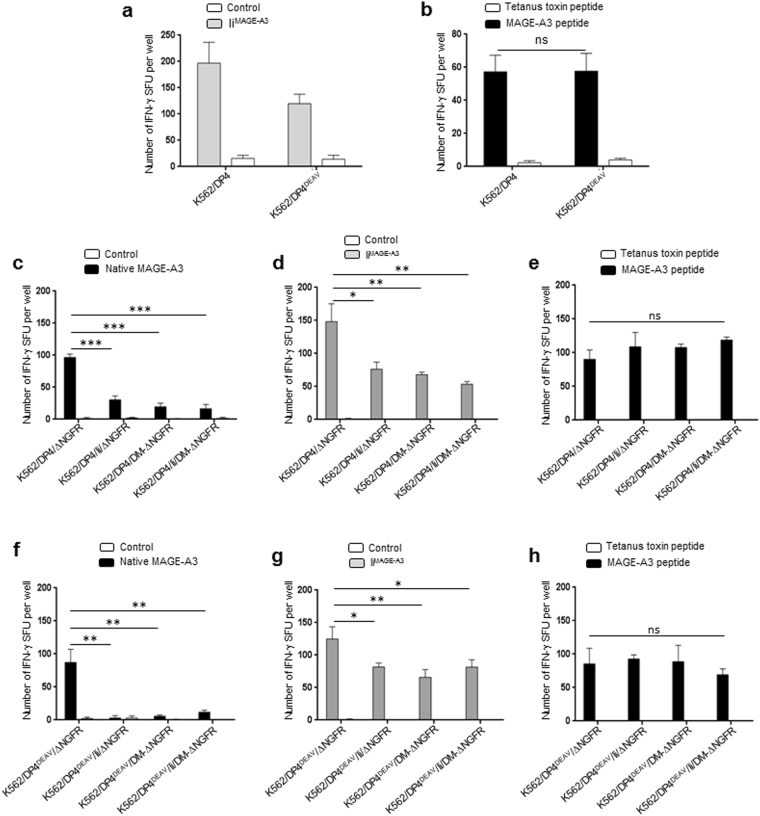Figure 4.
DP4 constitutively presents MAGE-A3243–258 peptide derived from chimeric IiMAGE-A3 regardless of the presence of Ii and HLA-DM. (a-h) DP4/MAGE-A3-specific CD4+ T cells were stimulated using the indicated K562-based aAPCs, and IFN-γ responses were measured by ELISPOT analysis. (a) K562 cells stably expressing either DP4 or DP484DEAV87 as indicated were transiently transfected with either IiMAGE-A3 linked with IRES-EGFP, or empty vector (control) encoding IRES-EGFP alone, and used to stimulate T cells. (b) Immunogenicity of stimulator cells was evaluated by stimulating responder T cells with the indicated K562-based aAPCs following pulse with 10 µM of either Tetanus Toxin TT947–967 peptide (control) or MAGE-A3243–258 peptide. (c,d) K562 cells stably expressing DP4, either in the presence or absence of stably expressed Ii and/or HLA-DM as indicated, were transiently transfected with native MAGE-A3 (c), IiMAGE-A3 (d), or empty vector (control) linked with IRES-EGFP, and used to stimulate T cells. (e) Immunogenicity of stimulator cells was evaluated by stimulating responder T cells with the indicated K562-based aAPCs following pulse with 10 µM of either Tetanus Toxin TT947–967 peptide (control) or MAGE-A3243–258 peptide. (f,g) K562 cells stably expressing DP484DEAV87, either in the presence or absence of stably expressed Ii and/or HLA-DM as indicated, were transiently transfected with native MAGE-A3 (f), IiMAGE-A3 (g), or empty vector (control) linked with IRES-EGFP and used to stimulate T cells. (h) Immunogenicity of stimulator cells was evaluated by stimulating responder T cells with the indicated K562-based aAPCs following pulse with 10 µM of either Tetanus Toxin TT947–967 peptide (control) or MAGE-A3243–258 peptide. Transient transfection efficiencies were normalized by EGFP expression as measured by flow cytometry (Supplementary Figure 3). The data shown represent the mean ± SD of experiments performed in triplicate. Results are representative of at least three independent experiments. ns: not significant; *p < 0.05, **p < 0.01, ***p < 0.001 by unpaired, two-tailed Welch’s t-test.

